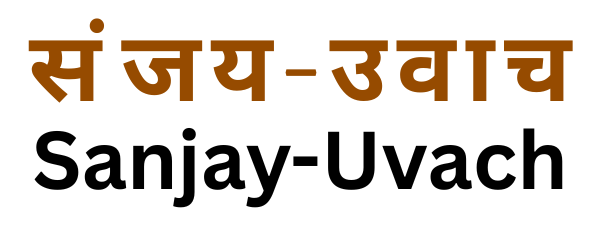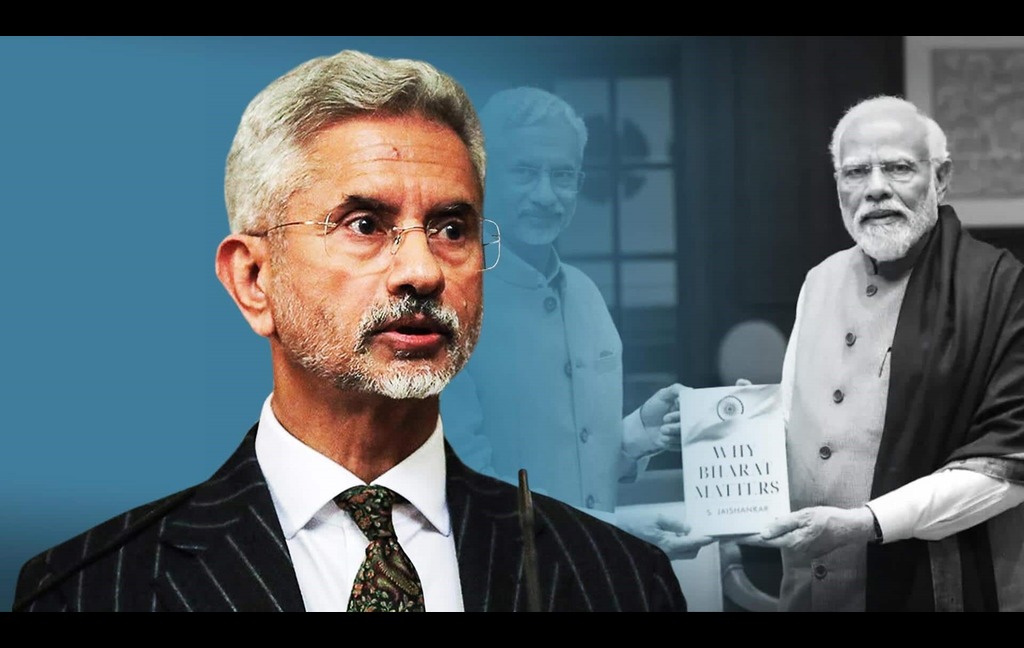Sometimes, a single word can break the strongest strategy and change the course of power. The most powerful man in the world sat in the Oval Office, surrounded by his advisors, completely convinced that he was about to reshape the global order. Donald Trump had his eyes set on India, and he believed he had it all figured out. Flash a few defense deals, wave some trade incentives, add a few symbolic compliments, and boom, India would fall in line like every other ally.
But what happened next sent shockwaves through corridors of power from Washington to Beijing. Trump wasn’t only viewing China as his main rival, India was also on his radar, and his approach was classic old school diplomacy. The kind that worked when America could dictate terms to developing nations. He assumed he could mold India into a junior partner, a grateful beneficiary of American influence who would follow Washington’s lead whenever called. But he miscalculated. He assumed he was dealing with the same India that had spent decades seeking approval. The country that carefully navigated between superpowers, hoping not to upset anyone. What he encountered instead was entirely different, a nation that had transformed itself while the world wasn’t paying attention.
Enter Dr. S. Jaishankar, not a typical diplomat speaking in endless circles and diplomatic jargon, but a man with something that made seasoned negotiators uneasy. He was calm, measured, and completely unimpressed by theatrics. When the administration started ramping up the pressure, expecting frantic negotiations and scrambling, he did something that caught everyone off guard. He listened, absorbed, and then responded with precise clarity.
The pressure campaign began predictably. The team made moves designed to force India’s hand. They removed India’s GSP benefits, those special trade privileges cherished by developing nations. They threatened tariff increases. They tried to push India away from its oil ties with Iran, waiving sanctions as if offering waivers was a favor. The Pentagon made noise about India’s defense deals with Russia, especially the S-400 missile contract, leaving Washington strategists frustrated. Every action was designed to convey the same message, fall in line or face consequences. Follow America’s vision for the world or get left behind. It was the same playbook that had succeeded countless times with other allies who eventually gave in.
But something unexpected happened. Instead of desperate phone calls, frantic trips to Washington, or hurried concessions, there was silence. Not the silence of submission, but the silence of a chess master studying the board while the opponent celebrates a move that hasn’t yet won the game.
Then came the moment that changed everything. In a press conference that barely made headlines, he was asked about India’s response to American pressure. The answer would be studied in think tanks, analyzed in intelligence briefings, and cited in diplomatic circles for years. One word. Just one word that carried the weight of a billion people’s aspirations and the strength of a civilization that had endured millennia. Reciprocity. Four syllables, seemingly ordinary to casual listeners, yet they sent tremors through every major capital. Reciprocity is not just a word. It’s a declaration of independence wrapped in diplomatic language. Its meaning was clear. The era of one-sided relationships was over. India was no longer a grateful recipient of US pressure tactics. You raise tariffs on us; we’ll raise tariffs on you. You block our tech firms, we’ll block yours. You try to dictate our foreign policy; we’ll remind you that we are a sovereign nation with our own interests to protect. Trump, despite his deal-making and bravado, wasn’t ready for this. He entered negotiations expecting to be the one setting all the terms. But here was India, a country he had labeled developing and therefore dependent, telling him the rules had changed. Not with anger or threats, but with quiet confidence that unsettled more than any outburst could. The word reciprocity caused a recalibration of how the world viewed India. Suddenly, other nations noticed. If India could withstand American pressure without collapsing, without pleading, without yielding, what did that mean for the global balance of power? But he wasn’t done.
When pressured to fully cut off oil from Iran, India’s response was measured but firm. Decisions would be made based on national interest, not Washington pressure. When the US suggested mediating on Kashmir, India responded swiftly and clearly. No role for third-party mediation, period. Each response followed a pattern. No drama. No emotional outbursts. No burning bridges. Just calm, clear assertions of sovereignty that left no room for doubt. It was like watching a masterclass in diplomatic strategy, using the opponent’s force against them without direct confrontation. The brilliance of the approach was that it revealed the flaw in Trump’s strategy. The entire American approach relied on outdated assumptions about India’s need for approval. They assumed India would trade autonomy for proximity to American power. They assumed India could be pressured, leveraged, and controlled with carrots and sticks. But they faced a country that had spent decades building its own center of gravity.
India wasn’t seeking alignment. It sought respect. Alignment implies subordination. Respect implies equality. Take defense, for instance. Trump loved selling weapons, tanks, planes, missiles, and sophisticated defense systems. And India bought some. It was profitable for American defense companies and seemed to confirm the transactional relationship Trump preferred. But India changed the game. Purchases would align with strategic interests, and simultaneously India would build its own defense capabilities. American executives suddenly faced competition not only from Russia and Europe, but from Indian companies developing hypersonic missiles, anti-satellite tech, aircraft carriers, and advanced drones. Plans to make India a long-term American customer started to fail. India was not just buying. It intended to create and compete. This didn’t happen in isolation.
While Trump focused on pressuring India, India quietly revolutionized its approach to international relations. The old non-alignment model, staying neutral between superpowers, was replaced with a more sophisticated multi-alignment strategy, positioning India as a country that was respected on its own terms. India engaged with every country on its own terms, forming partnerships based on mutual benefit rather than ideological alignment or historical loyalty. So, India strengthened ties with Russia while also deepening collaboration with the United States. It expanded connections with Iran while building bridges with Israel. It engaged with China on trade while standing firm on border disputes.
To outside observers it might have seemed inconsistent or opportunistic, but there was a clear rationale behind it. India was shaping a foreign policy that prioritized Indian interests first, without apology or explanation to anyone. The Quad Partnership, the strategic dialogue between the U.S., India, Japan and Australia, perfectly illustrated this approach. Trump’s team viewed it as a tool for containing China, a way to get India involved in America’s strategic rivalry with Beijing. But Jaishankar made it clear from the start that India’s participation was guided by its own vision of the Indo-Pacific, not by someone else’s containment plan. Even when Chinese troops engaged in aggressive moves along the line of actual control, creating the most serious border crisis in decades, India did not run to Washington seeking military support or security guarantees. Instead, it managed the situation with its own resources, while keeping diplomatic channels open with all parties. It was a master class in strategic independence, being strong enough to handle your own problems while remaining connected with the global community. The cumulative effect of all these actions was remarkable.
Countries around the world began noticing India’s approach and started wondering if they could follow a similar path. Could a nation engage with multiple powers without becoming subordinate? Could it form partnerships without compromising its sovereignty? Could it say no to superpowers without suffering major consequences? India’s example answered these questions with a resounding yes. But it required something many countries lacked, the confidence to believe in one’s own value and the patience to build alternative options instead of depending on a single patron.
Trump’s frustration was evident. Here was a country that was expected to be grateful for American attention, eager for American approval, willing to make sacrifices for American friendship. Instead, he found a nation that treated America as one important partner among many, not as the center of the universe around which all others must revolve. The psychological impact of this shift cannot be overstated. For decades American foreign policy assumed every nation secretly wanted to be closer to the United States. That American approval was the ultimate prize in global affairs. Countries might resist American pressure briefly but eventually they would align. India shattered that assumption completely. Not through confrontation or rebellion but through the simple act of charting its own path and adhering to it regardless of external pressure. It was a quiet revolution sending ripples throughout the international system.
Other countries began observing how India maneuvered globally. They saw that independence didn’t mean isolation, that being assertive didn’t require aggression, that rejecting unfair terms wasn’t ingratitude, it was sovereignty. India’s model became a case study in how middle powers could navigate great power competition without becoming pawns in someone else’s game. This transformation went beyond foreign policy. It extended to how India engaged with the world in technology, building its own digital infrastructure rather than relying solely on American or Chinese systems. In space India developed cost-effective solutions competing with established players. In pharmaceuticals it became a global supplier rather than just a market for western companies. Every sector told the same story. India was moving from being a rule taker to a rule maker, from a market to a competitor, from a junior partner to an equal stakeholder.
At the diplomatic level Jaishankar was the architect and spokesperson for this shift. His approach was revolutionary because it didn’t appear revolutionary. There were no dramatic speeches. No flag burning. No inflammatory rhetoric. Just a steady assertion of India’s right to make its own choices based on national interests. It was diplomacy as martial arts, redirecting force rather than confronting it head on. Achieving victory through balance rather than conquest. The long-term implications are still unfolding. Trump leaving office didn’t alter fundamental dynamics established by Jaishankar. Subsequent American administrations had to contend with the same reality. India will not be anyone’s junior partner regardless of who holds the White House or what incentives are offered. But the impact goes far beyond the US India relations. India’s example inspired other countries to rethink their own foreign policy options. Old binary choices West or Non-west, alignment versus non-alignment, dependence versus isolation, gave way to more nuanced strategies. Prioritizing national interest over ideological conformity. Perhaps Jaishankar’s greatest achievement was this. He didn’t just reposition India in the world, he reshaped how the world receives power, partnership and sovereignty. He demonstrated that in an interconnected world the smarter strategy is not picking sides. Its building bridges while remaining flexible as circumstances evolve. The principle that started it all, reciprocity, has grown into more than diplomacy. It has become a philosophy of international engagement, placing mutual respect at the center of all relationships. It’s a reminder that true partnership demands equality.


What a indepth story of current scenarios of international relationships , which ordinary man wouldn’t understand …..great narrations….keep it up…your writings will go a long way also for a layman to understand more